Lloyd Dingle BA (Open); BEng (Hons); CEng; MRAeS, Mike Tooley BA; Advanced Technological and Higher National Certificates Kingston University075065015X, 9780750650151, 9781429414715
Table of contents :
front cover……Page 1
copyright……Page 5
table of contents……Page 6
front matter……Page 10
Acknowledgements……Page 12
PART 1 INTRODUCTION……Page 13
1.2 Differing job roles for aircraft maintenance certifying staff……Page 15
1.2.1 The aircraft maintenance certifying mechanic……Page 16
1.2.2 The aircraft maintenance category B certifying technician……Page 17
1.2.3 The base maintenance category C certifying engineer……Page 18
1.3 Opportunities for training, education and career progression……Page 19
1.3.1 Category A certifying mechanics……Page 20
1.3.3 Category C certifying engineers……Page 21
1.3.5 The Kingston qualification and experience pathway……Page 24
1.4.1 Qualifications structure……Page 27
1.4.3 Examinations and levels……Page 28
1.5.1 Introduction……Page 30
1.5.2 The birth of the ICAO……Page 31
1.5.3 The UK CAA……Page 32
1.5.4 Civil aviation requirements……Page 33
1.5.5 Aircraft maintenance engineering safety culture and human factors……Page 34
Human factors……Page 38
1.5.6 The BAC One-Eleven accident……Page 39
The impact of human factors……Page 40
The safety recommendations……Page 41
References……Page 42
PART 2 SCIENTIFIC FUNDAMENTALS……Page 43
General introduction……Page 45
2.2.1 Numbers and symbols……Page 46
2.2.2 Decimal numbers, powers of ten and estimation techniques……Page 52
Division of fractions……Page 55
Subtraction of fractions……Page 56
Percentages……Page 57
2.2.5 Ratio and proportion……Page 59
Direct proportion……Page 60
Constant of proportionality……Page 61
2.2.6 Number systems……Page 62
Powers and exponents……Page 65
2.3.2 The laws of indices……Page 66
2.3.3 Factorization and products……Page 67
Products……Page 68
Factorization……Page 69
Simplifying algebraic expressions……Page 71
Algebraic division……Page 73
2.3.5 Transposition of formulae……Page 75
Transposition of simple formulae……Page 76
Transposition of formulae with common factors……Page 77
Transposition of formulae involving powers and roots……Page 78
2.3.6 Evaluation of formulae……Page 79
Logarithms and logarithm tables……Page 80
Using logarithms to perform arithmetic operations……Page 81
2.3.8 Surface area and volume of regular solids……Page 82
2.4.1 Solution of simple equations……Page 85
2.4.2 Graphical axes, scales and co-ordinates……Page 86
2.4.3 Graphs of linear equations……Page 88
Solution of quadratic equations by factorization……Page 90
Solution of quadratic equations using formula……Page 91
Solution of quadratic equations using a graphical method……Page 92
Analytical solution of simultaneous equations……Page 93
Graphical solution of two simultaneous equations……Page 94
The trigonometric ratios……Page 95
The sine ratio……Page 96
The cosine ratio……Page 98
The tangent ratio……Page 99
Rectangular and polar co-ordinates……Page 101
Converting rectangular and polar co-ordinates……Page 102
Angles of elevation and depression……Page 103
Bearings……Page 104
Elements and properties of the circle……Page 105
2.4.8 Geometric constructions……Page 108
ARITHMETIC……Page 112
ALGEBRA……Page 114
GEOMETRY AND TRIGONOMETRY……Page 116
3.1.1 Transposition and evaluation of more complex formulae and equations……Page 121
3.1.2 Logarithms and logarithmic functions……Page 122
3.1.3 The laws of logarithms……Page 123
3.1.4 Naperian logarithms and the exponential function……Page 125
3.1.5 Complex numbers……Page 127
3.2.1 Angles in any quadrant……Page 130
3.2.2 General solution of triangles……Page 131
3.2.3 The radian and circular measure……Page 134
The area of a sector……Page 135
Graphs of sine and cosine functions……Page 136
The cosine function……Page 138
3.2.5 Trigonometric identities……Page 141
3.3 Statistical methods……Page 143
The bar chart……Page 144
Frequency distributions……Page 147
3.3.2 Statistical measurement……Page 149
Mean for grouped data……Page 150
Mode……Page 151
Standard deviation……Page 153
3.4.1 Introduction……Page 156
Functions……Page 157
The gradient of a curve and graphical differentiation……Page 159
Notation for the derivative……Page 161
Differentiation……Page 162
Rate of change……Page 164
Turning points……Page 165
3.4.3 The integral calculus……Page 168
Some common integrals……Page 170
Simple applications of the integral……Page 171
Area under a curve……Page 172
The definite integral……Page 173
4.2 Units of measurement……Page 177
Metre……Page 178
Candela……Page 179
Weight……Page 182
The mass–weight relationship……Page 183
Relative density……Page 184
4.3.4 Pressure……Page 186
4.3.5 Speed, velocity and acceleration……Page 187
4.3.7 Newton’s laws of motion……Page 188
4.3.8 Temperature……Page 189
4.4.2 Chemical bonding……Page 190
4.5.2 Liquids……Page 194
4.6 Mechanics……Page 195
4.7.1 Vector representation of forces……Page 196
4.7.2 Resolution of forces……Page 199
4.7.3 Moments and couples……Page 201
4.7.4 Couples……Page 206
4.7.5 Aircraft weight and balance calculations……Page 207
Definition of stress……Page 209
Definition of strain……Page 210
Bulk modulus……Page 211
Specific strength……Page 213
4.7.10 Load–extension graphs……Page 214
4.7.11 Torsion……Page 215
Velocity–time graphs……Page 219
4.8.2 Using Newton’s laws……Page 221
Propulsive thrust……Page 222
Angular velocity……Page 224
Torque and angular acceleration……Page 225
Gyroscopic motion……Page 226
Sperry’s rule of precession……Page 227
4.8.5 Vibration and periodic motion……Page 228
Resonance……Page 229
4.8.6 Simple harmonic motion……Page 230
The spring–mass system……Page 231
The pendulum……Page 232
Work done……Page 234
Mechanical energy……Page 235
Conservation of mechanical energy……Page 237
Power……Page 238
4.8.8 Friction……Page 239
Solving problems involving friction……Page 240
Forces on a body at rest on an inclined plane……Page 242
Forces on a body moving up and down an inclined plane……Page 243
Mechanical advantage, velocity ratio and efficiency……Page 246
Law of a machine……Page 247
Pulleys……Page 248
The screw jack……Page 249
Gear trains……Page 250
4.9.1 Pressure……Page 252
Hydrostatic pressure……Page 253
Hydraulic press……Page 254
Atmospheric pressure……Page 255
Measurement of pressure……Page 256
4.9.2 Fluid viscosity……Page 258
Gases……Page 259
The International Standard Atmosphere……Page 261
Changes in properties of air with altitude……Page 262
4.9.4 Fluids in motion……Page 263
Equation of continuity……Page 264
The Bernoulli’s equation……Page 265
Using Bernoulli’s equation……Page 266
The venturi tube……Page 267
Compressibility……Page 268
Temperature measurement……Page 269
Thermal expansion……Page 270
Heat energy transfer……Page 271
Specific heat at constant pressure……Page 273
Latent heat……Page 275
4.10.2 Thermodynamic systems……Page 277
4.10.3 The first law of thermodynamics……Page 279
Constant volume process……Page 282
Reversible adiabatic process……Page 283
4.10.5 The second law of thermodynamics……Page 284
The practical four-stroke cycle……Page 285
The Brayton cycle or constant pressure cycle……Page 287
The practical Brayton cycle……Page 288
4.11.1 Light……Page 289
The laws of reflection……Page 290
Images in curved mirrors……Page 291
Calculation……Page 292
Refraction……Page 293
Variation in the speed of light……Page 294
Fiber optic light propagation……Page 295
Lenses……Page 296
Transverse waves……Page 299
Diffraction……Page 300
Electromagnetic spectrum……Page 301
Radio waves……Page 302
Aircraft radio communications……Page 303
The Doppler effect……Page 305
Sound waves……Page 306
Perceiving sound……Page 307
Units……Page 309
Statics……Page 310
Kinematics and dynamics……Page 312
Fluid dynamics……Page 314
Thermodynamics……Page 316
Light and sound……Page 318
PART 3 ELECTRICAL AND ELECTRONIC FUNDAMENTALS……Page 321
5.1.1 Electrical units and symbols……Page 323
5.1.2 Multiples and sub-multiples……Page 324
5.2.1 Atomic structure……Page 325
5.2.3 Semiconductors……Page 326
Syllabus……Page 327
5.3.3 Coulomb’s law……Page 328
5.3.5 Electric field strength……Page 329
5.4.1 Charge……Page 331
5.4.6 Conductance……Page 332
5.4.8 Energy……Page 333
5.5.1 Friction……Page 334
5.5.3 Magnetism and motion……Page 335
5.5.6 Pressure (piezoelectric) cells……Page 336
5.6.1 Cells and batteries……Page 338
5.6.2 Primary cells……Page 339
5.6.3 Lead–acid cells……Page 340
5.6.4 Ni-Cd cells……Page 341
5.6.6 Cells connected in series and parallel……Page 342
5.6.8 Thermocouples……Page 343
5.6.9 Photocells……Page 344
5.7.1 Current, voltage and resistance……Page 345
5.7.2 Ohm’s law……Page 346
5.7.3 Kirchhoff’s current law……Page 347
5.7.5 Series and parallel circuit calculations……Page 348
5.7.6 Internal resistance……Page 351
Syllabus……Page 353
5.8.2 Temperature coefficient of resistance……Page 354
5.8.3 Resistor types, values and tolerances……Page 355
5.8.4 Power ratings……Page 356
5.8.5 Resistor colour codes……Page 358
5.8.6 Series and parallel combinations of resistors……Page 359
5.8.7 The potential divider……Page 360
5.8.8 The current divider……Page 361
5.8.9 Variable resistors……Page 362
5.8.10 The Wheatstone bridge……Page 363
5.8.11 Thermistors……Page 364
5.9.1 Power, work and energy……Page 365
5.9.3 Power formulae……Page 366
5.10.1 Operation and function of a capacitor……Page 367
5.10.2 Capacitance, charge and voltage……Page 369
5.10.3 Energy storage……Page 370
5.10.4 Factors affecting capacitance……Page 371
5.10.5 Capacitor types, values and tolerances……Page 372
5.10.6 Working voltages……Page 373
5.10.7 Capacitor markings and colour codes……Page 374
5.10.8 Capacitors in series and parallel……Page 376
5.10.9 Capacitors charging and discharging through a resistor……Page 377
Syllabus……Page 381
5.11.3 Electromagnetism……Page 382
5.11.4 Force on a current-carrying conductor……Page 384
5.11.5 Magnetic field strength and flux density……Page 386
5.11.6 Magnetic circuits……Page 387
5.11.8 B–H curves……Page 389
5.12.1 Induction principles……Page 391
5.12.2 Induced e.m.f…….Page 392
5.12.4 Lenz’s law……Page 393
5.12.5 Self and mutual inductance……Page 394
5.12.7 Energy storage……Page 395
5.12.9 Inductor types, values and tolerances……Page 396
5.13.1 Basic generator theory……Page 398
5.13.2 A simple AC generator……Page 399
5.13.3 DC generators……Page 401
5.13.4 DC motors……Page 403
5.13.5 Series wound, shunt wound and compound motors……Page 406
5.13.6 Starter-generator……Page 407
5.14.1 Alternating current……Page 409
5.14.3 Frequency and periodic time……Page 410
5.14.4 Average, peak, peak-to-peak and r.m.s. values……Page 411
5.14.5 Expression for a sine wave voltage……Page 412
5.14.6 Three-phase supplies……Page 413
5.15.1 AC flowing through pure resistance……Page 414
5.15.2 Reactance……Page 415
5.15.4 Capacitive reactance……Page 416
5.15.5 Impedance……Page 417
5.15.6 Resistance and inductance in series……Page 418
5.15.7 Resistance and capacitance in series……Page 419
5.15.8 Resistance, inductance and capacitance in series……Page 420
5.15.9 Parallel and series–parallel AC circuits……Page 422
5.15.10 Power factor……Page 424
5.16.1 Transformer principles……Page 426
5.16.2 Transformer applications……Page 427
5.16.3 Transformer regulation……Page 428
5.16.4 Transformer efficiency and losses……Page 429
5.17.1 Types of filter……Page 430
5.17.3 High-pass filters……Page 431
5.17.4 Band-pass filters……Page 432
5.17.5 Band-stop filters……Page 433
5.17.6 More complex filters……Page 434
5.18.1 AC generators……Page 435
5.18.4 Three-phase distribution……Page 437
5.18.6 A practical three-phase AC generator……Page 440
Syllabus……Page 441
5.19.2 Producing a rotating magnetic field……Page 442
5.19.4 Three-phase induction motors……Page 444
5.19.5 Slip, torque and speed……Page 445
5.19.7 Capacitor starting……Page 448
5.19.8 Shaded pole motors……Page 449
Electron theory……Page 450
Electrical terminology……Page 451
DC circuits……Page 452
Resistance and resistors……Page 453
Capacitance and capacitors……Page 454
Magnetism……Page 455
DC motor and generator theory……Page 456
AC theory……Page 457
Resistive, capacitive and inductive circuits……Page 458
Filters……Page 459
AC motors……Page 460
6.1.1 Electronic circuit and systems……Page 463
6.1.2 Reading and understanding circuit diagrams……Page 465
6.1.3 Characteristic graphs……Page 466
Semiconductor materials……Page 468
Semiconductor classification……Page 470
The P–N junction diode……Page 471
Diode characteristics……Page 472
Maximum ratings……Page 473
Zener diodes……Page 474
SCRs……Page 476
LEDs……Page 477
Rectifiers……Page 478
Voltage doublers and voltage triplers……Page 485
Varactor diodes……Page 486
Diode detector (demodulator)……Page 488
Syllabus……Page 489
Bipolar junction transistors……Page 490
Transistor parameters……Page 492
Current gain……Page 495
FET characteristics……Page 496
Classes of operation……Page 499
Multi-stage circuits……Page 503
Buffers……Page 505
Bistables……Page 507
Logic families……Page 508
Operational amplifiers……Page 510
Input resistance……Page 512
Slew rate……Page 513
Gain and bandwidth……Page 515
Inverting amplifier with feedback……Page 516
Operational amplifier configurations……Page 517
Operational amplifier circuits……Page 518
Differentiators……Page 519
Summing amplifiers……Page 520
Positive versus negative feedback……Page 521
6.3.1 PCB design considerations……Page 523
6.3.3 PCB manufacture……Page 524
6.3.4 Surface mounting technology……Page 526
6.4.1 Control systems……Page 527
6.4.2 Servomechanisms……Page 528
6.4.3 Control methods……Page 529
6.4.5 Sensors……Page 530
6.4.6 Transformers……Page 534
6.4.7 The E and I transformer……Page 535
6.4.8 Synchros……Page 536
6.4.9 Open- and closed-loop control……Page 539
6.4.10 Control system response……Page 540
Semiconductors……Page 543
Printed circuits……Page 547
Servomechanisms……Page 548
PART 4 FUNDAMENTALS OF AERODYNAMICS……Page 551
7.2 A review of atmospheric physics……Page 553
7.2.3 Humidity measurement……Page 554
7.2.6 The International Civil Aviation Organization ISA……Page 555
7.3.1 Static and dynamic pressure……Page 557
Streamline flow, laminar flow and turbulent flow……Page 558
Aerofoil terminology……Page 560
7.3.4 Effects on airflow with changing AOA……Page 563
Viscosity……Page 564
Boundary layer separation and control……Page 565
7.3.6 Lift, drag and pitching moment of an aerofoil……Page 566
7.3.7 Total aircraft drag and its components……Page 568
Interference drag……Page 569
Induced drag……Page 570
Wing tip stall……Page 571
7.3.8 Aerodynamic effects of ice accretion……Page 572
7.4.1 The four forces acting on the aircraft……Page 573
Gliding flight……Page 576
Climbing flight……Page 577
7.4.3 Aircraft loading and the flight envelope……Page 579
7.5.1 The nature of stability……Page 582
Aircraft response to a disturbance……Page 583
Lateral stability……Page 584
Longitudinal stability……Page 588
Directional stability……Page 590
7.6.1 Introduction……Page 591
Aileron drag……Page 592
The rudder……Page 593
Trailing edge flaps……Page 594
Leading edge flaps……Page 595
Aerodynamic balance……Page 596
Tabs……Page 597
Trim tab……Page 598
7.7 Multiple choice questions……Page 599
APPENDICES……Page 607
A Engineering licensing examinations……Page 609
B Organizations offering aircraft maintenance engineering training and education……Page 613
C The role of the European Aviation Safety Agency……Page 615
D Mathematical tables……Page 617
Ampere……Page 627
E.3 English Engineering system (Imperial) base units……Page 628
E.5 Examples using the SI system……Page 629
E.6 Examples of useful conversions……Page 632
F Answers to “Test your understanding”……Page 635
index……Page 649
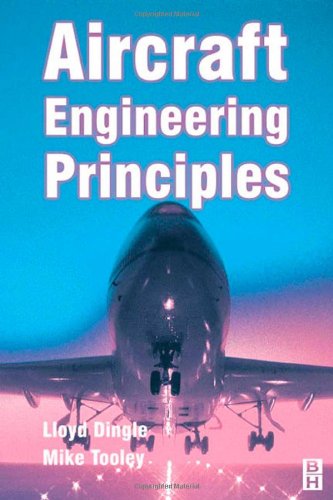
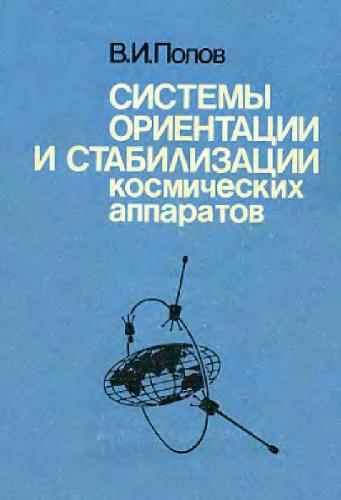
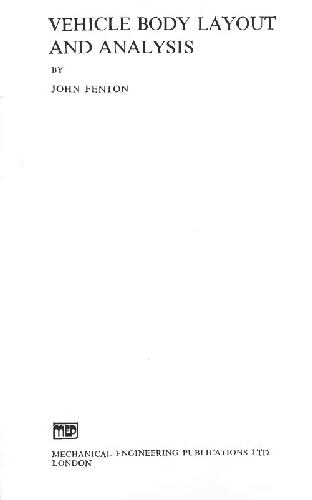
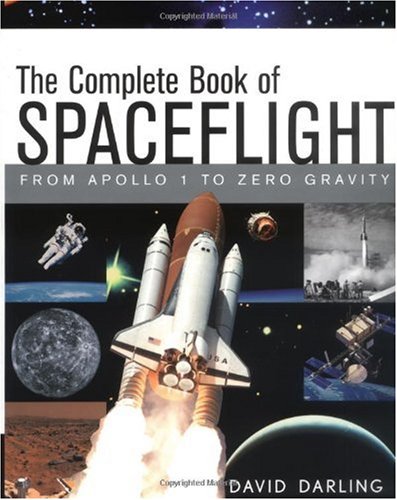
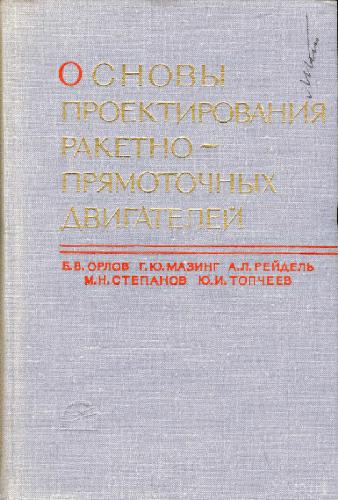

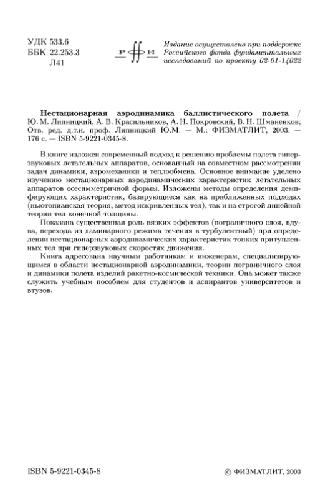
Reviews
There are no reviews yet.